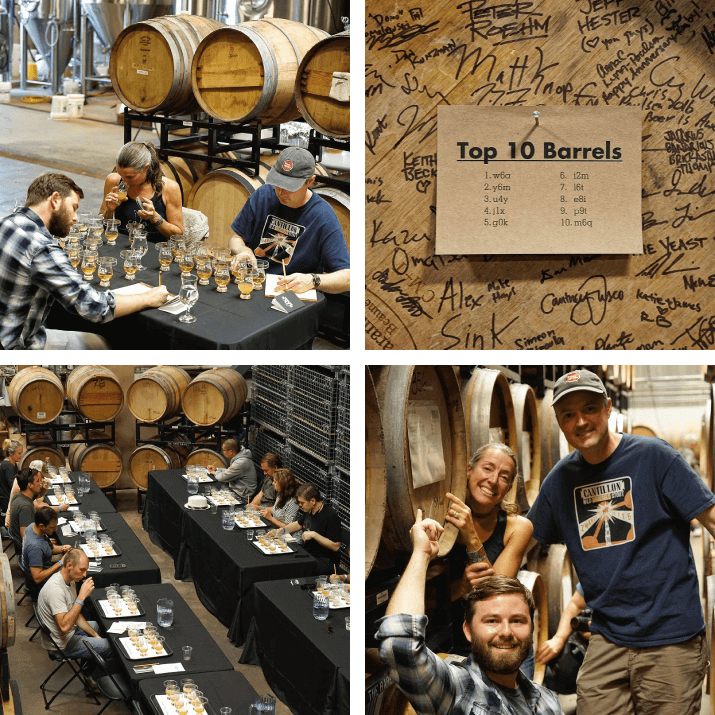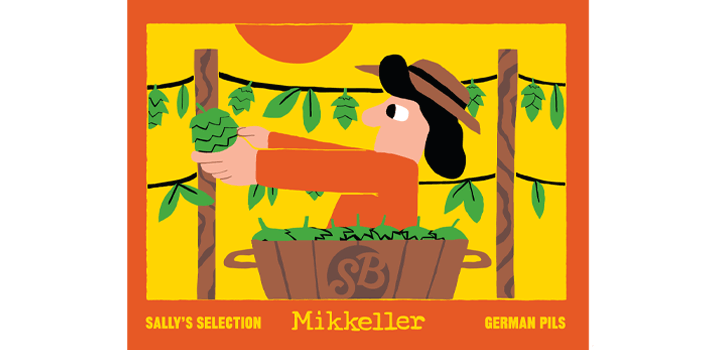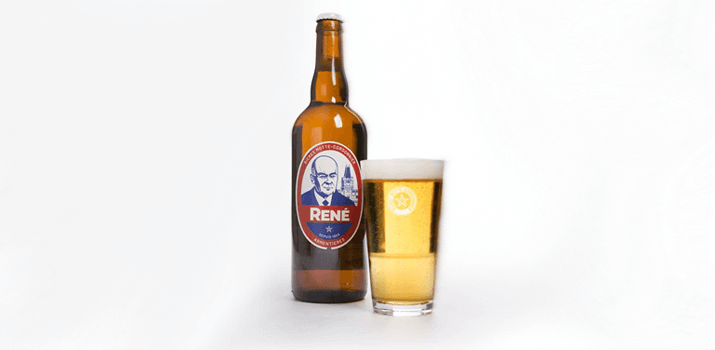Lesson 5: What is a Lager?
Lovely Lagers
As mentioned in Week 2, lagers depend on lager yeast strains. These guys are “bottom-fermenting” and rather stoically prefer to ferment at colder temperatures—about 7-13?C. One of the results of colder fermentation is that it takes longer, a lot longer, than warmer fermentation and the yeast eats up virtually all of the fruity flavours called esters as well as other flavours for which the yeast is responsible. In turn, the brewer’s patience is rewarded with a clean, pure, and refreshing beer that showcases the malt and hops, it is usually sparkling clear and can come in a variety of colours from pale straw to deep black. Lagers are inherently less flavourful than ales, yet some breweries are now experimenting with dry-hopping and increasing ABVs in order to give a little more interest and variety to the lager family. For which we are very thankful and thirsty.
The Germans are famed for their lager brewing culture. In fact, the term lager comes from the old German term lagern, which means "to store". Centuries ago--before the discovery of yeast--German brewers would brew their beer in the summer and just let it sit wherever they could pop down the casks. What it resulted in was terrible spoiled beer. However, at some point, they discovered that they could store their beer in the caves and it wouldn’t get ruined. Eventually, the cold-temperature lager yeasts found it and soon the beer was being fermented in the caves as well.
The term lager comes from the old German term lagern which means "to store".
Geographically at close quarters, it’s no surprise that there was a lot of influence and poaching going on in neighbouring Austria and the Czech Rebublic. In fact, the Märzen/Oktoberfest beer came out of Anton Dreher’s Viennese creation of the Vienna Lager. The Czechs would prefer it if you didn’t compare them to the Germans, as they’ve got their own history to be immensely proud of; its most famous comes from the town of Plzen. Not a surprise how they got the name “Pilsner” out of that, is it?
It's not just the European heartland that produces fantastic lagers, however. Indeed, as lagers remain the most-consumed and most-popular beer style in the world it's no surprise that many great lagers are produced all over. Classic American Amber Lagers, like Brooklyn Lager, are highly regarded for their clean character while presenting the hops beautifully. Cold-weather countries like those of the Baltic States have an environment suitable for lagering and developed the lager's answer to the Imperial Stout: the Baltic Porter. Even other countries where ales are more traditional--like the UK and the Netherlands--are brewing some fantastic examples as breweries are discovering that these styles have a mass-appeal that can be profitable.
There’s lager and Then There’s Lager
Sadly, lager seems to have gained a reputation as something that those who want to be “in the know” should avoid. And a lot of times that’s true. But this notion does not pertain to the lagers that are crafted with passion using centuries-old traditions on which cultures are built and history was written. Lagers are technically more difficult to make and require a talent to showcase the ingredients.
The Germans, the Czechs, the Austrians, and—yes—even the Americans do produce some fascinatingly beautiful lagers. These lagers can be sparkling pedestals for the malts and water used as well as the noble hops of Saaz, Hallertauer, Tettnanger, and Spalter. Bottom line is, if someone is trying to tell you that you’ll be an elegant woman on a beach (possibly, but questionable if you’re a man) or if their advertising budgets could repay Greece’s debt, that’s a lager. Always reach for the “Lagers” with a capital “L.”
Famous Lager Styles
You're probably familiar with many beer style names but in case you're not sure which ones are lagers, here's a quick list:
American Amber Lager (USA)
California Common/Steam Beer (USA)
Czech/Bohemian Pilsner (Czech Republic)
German Pilsener (Germany)
Bock (Germany)
Doppelbock (Germany)
Maibock/Helles Bock (Germany)
Dortmunder Export (Germany)
Munich Helles/Hell (Germany)
Märzen/Oktoberfest (Germany)
Rauchbier (Germany)
Vienna Lager (Austria)
Baltic Porter (Baltic States)
Let's Practice!
Here we are again, tasting a beer. All this talk of lagers has us craving one. Shall we have a taste? Let's go with a fine example of a German Pilsener: Jever
Style Guide: German Pilsener
Soft water creates a suitable platform for presenting more spicy, herbal, floral hop character from the noble hops of Hallertauer, Saaz or Tettnanger, et al. Expect a light golden colour with a rich, dense head. A crisp bitter finish extends beyond a lovely malt profile. Clean, refreshing and bitter, the German Pilsener is purely pure.
Aroma
Grassy and floral notes are accompanied by a distinct graininess.
Appearance
Bright gold and sparkling clear, Jever’s high carbonation gives an attractive appearance.
Flavour
Jever is very thirst quenching thanks to its long dry finish and firm bitterness. Distinctive herby hops.
Mouthfeel
As a Pilsener should be, this is defined by a high carbonation and a very clean finish.
Final Thoughts:
Unique in taste, Jever is one of the finest German pilseners out there.
------
We hope this week's discussion on the lager has gotten you inspired to try more. As you can see there are a good many styles to explore and we hope that during a future visit to your favourite taproom you'll give one a go. Sometimes there is nothing more beautiful than subtle simplicity.
Thanks again for joining us this week. We'll see you in Week 6 for Part II of this Lager vs. Ale discussion. That's right: it's Ale Week! Grab that Sierra Nevada Pale Ale and join us. Cheers!





